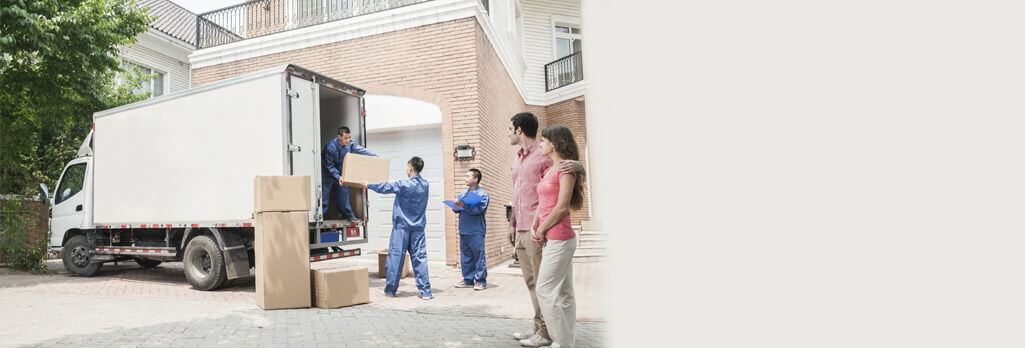Leveraging Expertise in Piano Moving for Optimal Safety
Posted on 11/06/2025
Leveraging Expertise in Piano Moving for Optimal Safety
When it comes to moving a piano, the process is far more complex than simply transporting any other household item. Pianos are valuable, delicate, and often hold significant sentimental value. Ensuring their safety during relocation is crucial. For both seasoned pianists and first-time owners, leveraging professional expertise in piano moving is the best way to achieve optimal safety for your instrument and peace of mind for yourself.

Why Is Piano Moving So Challenging?
The sheer size, weight, and delicate mechanisms of pianos pose unique challenges during relocation. Some of the main challenges include:
- Weight and Bulk: Upright pianos can weigh 300-800 lbs, while grand pianos can exceed 1,200 lbs.
- Fragile Components: Internal strings, hammers, and keys are sensitive to vibrations, impacts, and tilting.
- Awkward Shape: Pianos are heavy but often have parts (legs, pedals, lids) that protrude and are prone to damage.
- Obstacles: Moving a piano often involves coping with stairs, narrow hallways, and tight doorways.
Considering these factors, leveraging the specialized expertise of piano movers is not a luxury--it's a necessity for optimal safety and successful transportation.
What Does Expertise in Piano Moving Entail?
Leveraging professional piano movers isn't just about having extra hands. It's about accessing a wealth of knowledge and resources that significantly reduce the risk of damage. Key elements include:
1. Specialized Training and Skills
- Trained movers understand the construction of different types of pianos and how to handle each securely.
- They know how to disassemble and reassemble parts as needed, minimizing risk to fragile components.
2. Proper Safety Equipment
- Piano dollies, skid boards, ramps, and protective padding are vital for safe transport.
- Custom straps and harnesses ensure secure handling while navigating stairs or uneven terrain.
3. Risk Assessment and Strategic Planning
- Expert movers assess entryways, routes, and potential hazards in advance.
- They develop strategies--such as removing doors or utilizing lifting equipment--to avoid risks to the piano and surroundings.
4. Insurance and Liability Coverage
- Professional piano moving companies provide insurance for added peace of mind.
- This coverage protects you from financial loss in the event of accidental damage.
The Benefits of Leveraging Piano Moving Expertise
- Protection for your piano: Safeguards your investment from scratches, dents, and internal damage.
- Personal and property safety: Reduces risk of injury to yourself or damage to floors, walls, and doorways.
- Time and stress reduction: Professionals know how to move pianos efficiently, saving you time and effort.
- Cost efficiency: While hiring experts is an investment, it can prevent costly repairs or replacement due to damage from improper handling.
Best Practices for Safe and Efficient Piano Moving
While hiring experts is the best approach, understanding the best practices they use can help you appreciate the value of professional piano moving expertise:
Pre-Move Assessment
- Evaluate the size and type of piano (upright, grand, baby grand, etc.).
- Measure doorways, halls, and staircases to identify potential obstacles.
- Plan the shortest, safest route from start to finish.
Using the Right Equipment
- Padded wrapping protects the exterior finish and sensitive parts.
- Skid boards and specialized dollies support the weight and facilitate movement across floors.
Team Coordination
- Experienced teams communicate clearly and assign defined roles to prevent mishaps.
- Movers coordinate lifting and maneuvering around corners and doors.
Safe Lifting Techniques
- Using proper lifting posture minimizes the risk of injury.
- No single person should attempt to lift a piano--teamwork is essential.
Vehicle Preparation
- Moving trucks with climate control protect the piano from extreme temperatures and humidity.
- Secure strapping inside the vehicle prevents movement and possible impact damage during transit.
Common Mistakes Made During Amateur Piano Moves
DIY piano moves often result in catastrophe due to inexperience or lack of proper equipment. Common risks include:
- Scratching or chipping the piano's finish
- Dropping the piano on steps or uneven ground
- Snapping piano legs or damaging the pedals
- Pinched fingers or back injuries
- Improper loading causing the piano to shift during transit
With high-value instruments, even a minor incident can result in costly repairs or irreversible loss. With this in mind, the cost of hiring professional piano movers is a small price to pay for peace of mind and optimum protection.
Important Considerations When Selecting a Piano Moving Company
Leveraging expertise in piano moving for optimal safety requires choosing the right professionals. Key criteria include:
- Experience: Look for companies with a long track record and specialized experience moving various types of pianos.
- Insurance: Ensure coverage for liability and property damage.
- Customer Reviews: Positive feedback and references indicate reliable service.
- Equipment: Ensure the company uses the latest, most effective moving equipment.
- Transparent Pricing: Avoid hidden fees by requesting clear, written estimates.
How Expertise Prevents Long-Term Piano Damage
Pianos are not only heavy and fragile but also highly sensitive to environmental stress. Mishandling during a move can cause subtle internal damage that may not be immediately apparent. Professional piano movers understand:
- The importance of keeping pianos upright to avoid straining the frame and strings.
- Proper handling to prevent sudden temperature changes which can affect wood and tuning.
- The need to avoid jarring impacts which can misalign delicate internal mechanisms.
By utilizing expert techniques and equipment, piano moving professionals ensure your instrument arrives in the same condition as it left, preserving both its sound and appearance.
Additional Services Professional Piano Movers Offer
Leveraging professional piano movers often goes beyond just moving the instrument. Many experts also offer:
- Piano Tuning and Maintenance: After a move, your piano may require adjustment due to shifting and changes in humidity.
- Climate-Controlled Storage: Temporary storage in optimal conditions for pianos awaiting delivery.
- Long-Distance and International Moves: Expertise in crating, shipping, and cross-border logistics.
- Assembly and Setup: Reattaching legs, pedals, and ensuring the piano is level and ready to play after arrival.
Preparation Tips for Piano Owners
- Clear the path: Remove rugs, furniture, and decorations along the moving route.
- Communicate: Inform movers of any unique features, such as steps, landings, or tight turns.
- Secure personal items: Remove sheet music, lamps, and other items from the piano.
- Mark structural issues: Point out loose banisters, uneven flooring, or other hazards.
Proactive preparation helps professional piano movers strategize the safest, most efficient move and ensures optimal results.

Frequently Asked Questions (FAQ) about Piano Moving Safety
Q: Can I move a piano myself with the help of friends?
A: While it might seem cost-effective, DIY moves pose significant risk to the piano and personal safety. Without the right expertise and equipment, serious damage or accidents are likely. It's far safer to rely on professionals with specialized training.
Q: How long does a typical piano move take?
A: Timing varies based on the type of piano, location, and distance. Most local moves can be completed within a few hours, but detailed planning and careful execution are essential for optimal safety.
Q: Will my piano need tuning after a move?
A: Yes. Even when handled with expert care, relocation may affect a piano's tuning due to movement and changes in environment. Arrange to have your instrument tuned after it arrives at its new location.
Q: What special precautions are taken for antique or very valuable pianos?
A: Professional movers employ even more thorough planning, extra padding, and, if needed, custom crating for high-value or antique pianos. Specialized insurance is also recommended for these items.
Conclusion: For Optimal Piano Safety, Leverage Professional Expertise
Moving a piano safely is a task that demands careful planning, technical skill, and the right equipment. By leveraging professional expertise in piano moving, you safeguard your investment and avoid potentially disastrous outcomes. Don't let your valuable instrument fall victim to a well-intentioned but under-prepared move. Invest in specialized piano movers who blend experience, skill, and dedication for the ultimate in safety and satisfaction.
Remember:
- Protect your piano -- trust the experts.
- Minimize risk -- don't cut corners with DIY solutions.
- Achieve peace of mind -- choose movers who specialize in piano relocations.
For optimal safety when moving your piano, always rely on seasoned professionals who are equipped and trained to handle every nuance of this delicate, complex task. Your piano--and your back--will thank you!









